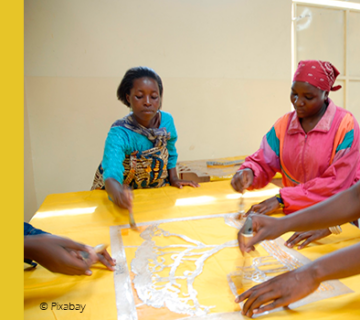An interview with Lucia Abignente, co-author with Giovanni Delama of ‘A Golden City’, the story of the first Mariapoli, to be published by Città Nuova in September.
The first Mariapolis happened 70 years ago in the Dolomites in the Trentino province of northern Italy. It was the summer of 1949 and Chiara Lubich had a few years earlier made her definitive choice to live the Gospel, a choice already shared with a group of companions. Together they went to the mountains, to Tonadico di Primiero, to rest. It became a key moment in the history of the Focolare Movement. During this time, through a mystical experience Chiara gained a new understanding of God’s plan on the emerging presence in the Church: the Work of Mary. Since that time, similar gatherings, which came to be called Mariapolis (“City of Mary”), take place every year in summer time, in countries all around the world.
In the story of Mariapoli, the years from 1949 to 1959 have particular significance. Can you explain in what way?
Those years mark the origins of Mariapolis, years in which the power of the charism of unity, given by God to Chiara for the Church, was producing new fruits. A very strong sense of communion was generated among the participants who were of all ages, social backgrounds and even from different countries. (The 1959 Mariapolis was visited by 12,000 people from 27 countries!) It emerged as a profound experience of God, a way of sanctity lived together as a family. It has been described as a “people of God”, to use a term the Second Vatican Council would later promote.
Why is it called “Mariapolis”?
In fact, this name first appeared in 1955, and it emerged from the life of these gatherings over the years, which developed as a kind of small city, a people who identified themselves as being guided by Mary. The Gospel-inspired love lived among them generated the presence of the divine, in the sense of Jesus’ teaching, “Where two or more are united in my name, I am in their midst” (Mt 18:20). And this enlightening experience inspired the title of our book on the Mariapolis phenomenon.
How would you define the key elements of these gatherings which are still taking place today?
I would summarize them in one word: “communion”, or rather “communions”. Meaning, communion in the Eucharist, renewed each day; communion with the Word of the Gospel; communion with our sisters and brothers. This is what characterized the Mariapolis experience of 1949, and this is what we find in the Mariapoli which continue to this day. From this communion, people draw strength to continue to live this experience in their daily lives, to cooperate in the design of God on Creation and on the social environment around them.
What is the most important thing you learnt from those who participated in the very first Mariapoli?
Meeting those “witnesses”, I saw how their Mariapolis experience is not a memory for them but a vivid and vital reality to this very day. From the written testimonies I’ve gleaned the authenticity of a life lived as a “body”, in the quest for unity.
Those early Mariapoli have sparked off some notable long-term effects …
First of all the “Città Nuova” magazine (“New City” or “Living City”) came to life during these first Mariapoli as a way of keeping all the participants in touch with this life once they got back home. Then there are the permanent “Mariapoli” small towns which have been established in different countries – Chiara first spoke about these in 1956. The Focolare’s experience of dialogue among members of different Christian Churches was already part of the Fiera di Primiero Mariapolis in 1957. The presence of charismatic figures within the Catholic Church indicated pathways of communion which were later developed in the Second Vatican Council and by successive Church leadership. It’s also possible to identify the precursors of the Movement’s impact on social and political fields.
In the permanent Mariapolis towns, people of different ages, countries, cultures and Christian traditions live together, putting the Gospel into practice. Diversity lived in a context of unity. Do you draw any message from these Mariapolis towns for today’s Europe fragmented by nationalist and populist pressures?
Pope Francis made a very important point when he visited the Mariapolis town of Loppiano, Italy, last year. He spoke of the “mysticism of ‘us’” which propels us to walk together through our part of history. This is something which was very alive in the first Mariapoli. For example, in 1959, despite being so close to the end of the second world war, participants from Italy, Germany and many other countries overcame their own personal barriers, to consecrate their peoples to Mary. They wanted to do this together, as a demonstration of love for one another, forming the “one people of God”.
Claudia Di Lorenzi


 Italiano
Italiano Español
Español Français
Français Português
Português




Foi uma escolha radical em 1976, e que momento a momento tenho de Lho renovar… É uma alegria o SER VOLUNTÁRIA DE DEUS…